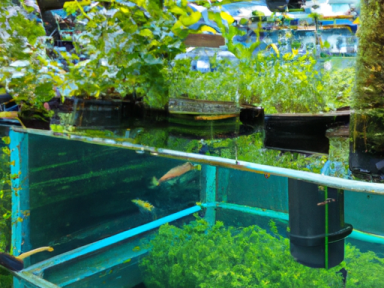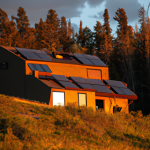Aquaponics for Beginners: Building a Sustainable Farming System
Aquaponics is a revolutionary farming technique that combines aquaculture (raising fish) with hydroponics (growing plants without soil). This symbiotic relationship between fish and plants creates a self-sustaining ecosystem that can provide fresh food and the ultimate form of self-reliance. In a world filled with uncertainty and increasing food shortages, aquaponics offers a solution that every beginner homesteader should consider.
The Basics of Aquaponics
Aquaponics operates on the principle of using the waste produced by fish to provide essential nutrients for plants. Here is a simplified breakdown of how the system works:
1. A fish tank is the heart of the aquaponics system. It can be any type of water container, but commonly used options include IBC tanks, fish ponds, or even large aquariums.
2. Fish are raised in the tank, and they produce waste (ammonia) as they eat and breathe. This waste can be toxic to fish in high concentrations.
3. The water from the fish tank is circulated into a grow bed or a series of grow beds where the plants are grown. The grow bed contains a growing media like clay pebbles or gravel that provides support for the plants.
4. The plants’ roots absorb the nutrients from the water, effectively filtering out the waste and purifying it. The plants thrive on the nutrients, preventing the build-up of toxic substances in the fish tank.
5. The purified water is then returned to the fish tank, creating a continuous cycle. This closed-loop system minimizes water usage and eliminates the need for synthetic fertilizers.
The Benefits of Aquaponics
Aquaponics offers numerous advantages for beginners looking to embark on a homesteading journey:
1. **Sustainable Food Production**: By combining fish and plant cultivation, aquaponics produces both protein-rich fish and fresh vegetables. You can rely on this system to provide a continuous source of nutritious food for you and your family.
2. **Water Conservation**: Unlike traditional farming, aquaponics uses minimal water. As the water is continuously recirculated, it only needs to be topped up to account for evaporation. This makes aquaponics an excellent solution for regions facing water scarcity.
3. **Elimination of Chemical Inputs**: Aquaponics allows you to grow organic, pesticide-free produce. The plants absorb the nutrients naturally present in the fish waste, eliminating the need for synthetic fertilizers and harmful chemicals.
4. **Year-Round Production**: With proper planning and a controlled environment, aquaponics enables you to grow food throughout the year. This reduces your dependence on seasonal produce and ensures a steady food supply.
5. **Increased Self-Reliance**: In times of crisis or emergencies, having a self-sustaining food system can be a lifesaver. By investing in aquaponics, you are taking a proactive step toward self-reliance and preparedness.
Getting Started with Aquaponics
Now that you understand the basics and benefits of aquaponics, here are some initial steps to help you get started:
1. **Research and Learn**: Aquaponics may seem intimidating at first, but there are plenty of resources available online and in books to guide you. Educate yourself about the various system designs, fish species, and plant choices that are suitable for your location.
2. **Start Small**: As a beginner, it’s best to start with a small-scale system. This allows you to learn and make adjustments before scaling up. A small aquarium or a few grow beds can serve as the perfect starting point for your aquaponics journey.
3. **Choose the Right Fish**: Select fish species that are well-suited to your climate and have a high tolerance for fluctuations in water temperature and quality. Tilapia, trout, and catfish are popular choices for beginners.
4. **Select Plants Wisely**: Different plants have different nutrient requirements, and not all plants thrive in an aquaponic system. Leafy greens like lettuce, herbs, and some fruiting plants like tomatoes and peppers are ideal choices.
5. **Invest in Essential Equipment**: To set up your aquaponics system, you will need a fish tank, grow beds, a water pump, piping, and a filtration system. Make sure to invest in quality equipment that will last for the long term.
Conclusion
Aquaponics combines the best of aquaculture and hydroponics to create a sustainable farming system. Embracing this innovative technique empowers beginner homesteaders to produce their own food while minimizing their environmental impact. By taking control of your food supply, you are not only ensuring a more secure future but also gaining the freedom and peace of mind that comes from self-reliance. So, what are you waiting for? Dive into the world of aquaponics and start building your sustainable farming system today.



GIPHY App Key not set. Please check settings